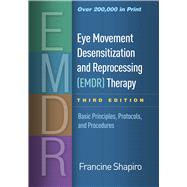New to This Edition
- Over 15 years of important advances in therapy and research, including findings from clinical and neurophysiological studies.
- New and revised protocols and procedures.
- Discusses additional applications, including the treatment of complex trauma, addictions, pain, depression, and moral injury, as well as post-disaster response.
- Appendices with session transcripts, clinical aids, and tools for assessing treatment fidelity and outcomes.









